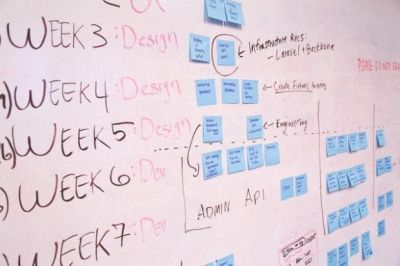How to Mitigate Risk for Project Management

Mitigating risk can help a business lessen the impact when problems arise or eliminate the problem.
Being able to think ahead and have the foresight for potential challenges that could arise allows you to prepare for them, saving you time, money, and workforce.
It’s impossible to eliminate all the risks; every decision, strategy, tactic, or operation has some level of risk. You are in business because you believe that the risk is worth the reward (profit).
However, accepting risk doesn’t mean you can be reckless. In fact, smart companies manage their risk to create a stable, reliable profit.
Here are some ways to mitigate risks through project management.
Standards and Protocols
Many industries have safety and operational standards that must be adhered to by law. They are there for a reason—to protect workers, customers, and the environment, or avoid a contagion effect on the economy at large.
Regulations provide a ready-made platform from which your project risk management strategy can launch. You don’t have to reinvent the wheel on every project. Simply follow the regulations from previous ones. Non-compliance with regulations comes with risks, as you could be jailed, fined, suspended, or shut down.
Having an organized and structured project management platform or team allows you to effectively implement standards and protocols into all aspects of your business. Project management platforms can also track inspection or equipment upkeep timelines.
The platform will help you maintain a timeline, assign responsibilities, log real-time updates, and keep notes on essential compliance issues.
Keep It Automated
Companies should embrace innovations in machine learning, automation, and artificial intelligence. When processes are automated, it eliminates variation and potential risks. Automation performs tasks quicker and more accurately than a human, and it is also more adept at spotting an error.
Machine learning gives your automated system the ability to learn from each interaction, making it more accurate and efficient in time. Artificial intelligence gathers machine learning and automation capabilities to produce a system with a layer of decision-making capabilities.
Have templates and organized processes in place to ensure consistency and avoid the uncertainty that leads to obstacles. Many resources and templates are available to help create an organized, efficient template or process with proven best practices, like a marketing plan template or product development charts.
Manage Budget
Although you may have all the safeguards in place to avoid risks to your business, problems will arise regardless. One of the most significant and common risks is financial. Financial risk can entail your business running out of cash, becoming insolvent, or incurring huge losses.
This is why it is always essential to have savings and budgets to address problems quickly and efficiently.
Many risks can manifest themselves financially and suck a business dry of its finances or even cause a business to shut down. Project management can help manage budgets and forecast expenses and income, so you can estimate what you will have in the bank at any given time.
Assign Responsibilities
A significant aspect of project management that managers overlook is assigning tasks and ensuring that somebody takes responsibility. There must be a transparent chain of command so team members know where they stand and a transparent chain of custody to be aware of their part in the project.
Overlaps can confuse and result in nobody taking responsibility for tasks, especially when something goes wrong.
Although multiple people may be involved in completing a task, be sure that one person is assigned responsibility for the task and ensure it gets completed satisfactorily. When each member knows their stake in a project, you will have accountability, which can help projects run much smoother and increase efficiency.
Realistic Timelines
Many projects fail because of unrealistic timelines and due dates that set them up for disaster from the start. Use past experiences and input from the team to determine the timelines that will work.
Another issue that can arise regarding timelines is losing track of them. A project has many moving parts, but some can’t move forward before completing earlier tasks. It can be daunting to keep track of all tasks, their progress, and their completion.
Project management platforms enable you to automate the process to have updates as each task is due or is complete.
By utilizing project management platforms and strategies, you can better map out timelines for various stages and aspects of a project. This helps prevent overlaps or gaps in the process that could become problematic.
Clarity and Communication
Communication is at the center of project management. Without the ability to clearly and effectively communicate, nothing will get done. Clear communications apply to team members and parties outside the company, such as customers, suppliers, and regulators.
Project managers have the responsibility of increasing communication and providing clarity for their teams. If people are not on the same page, that is when things slip through the cracks. Implement strong communication practices for your team and share project expectations, so all parties are in sync on desired outcomes.
Manage Your Risks
Every project comes with risks that can result in losses. Managing the risks will help you stabilize and make profits more certain. Use project management platforms to reduce the bulk of the risks on any project.





